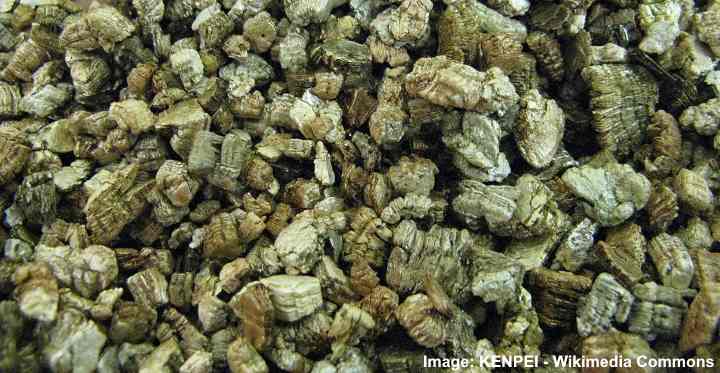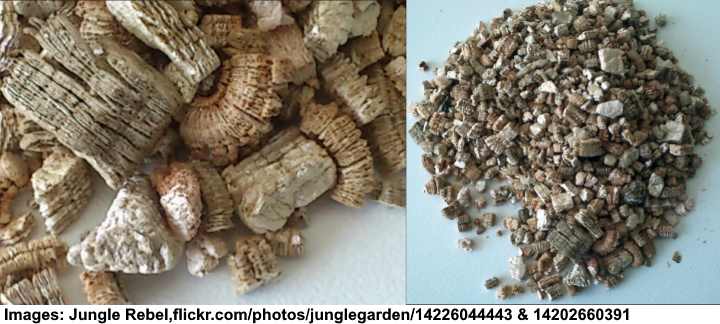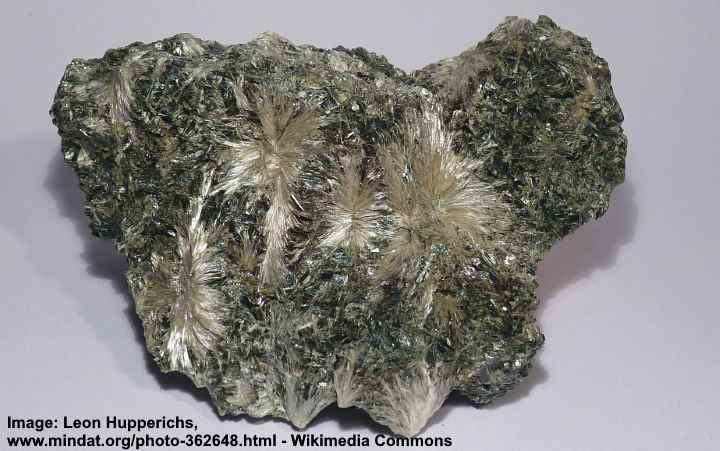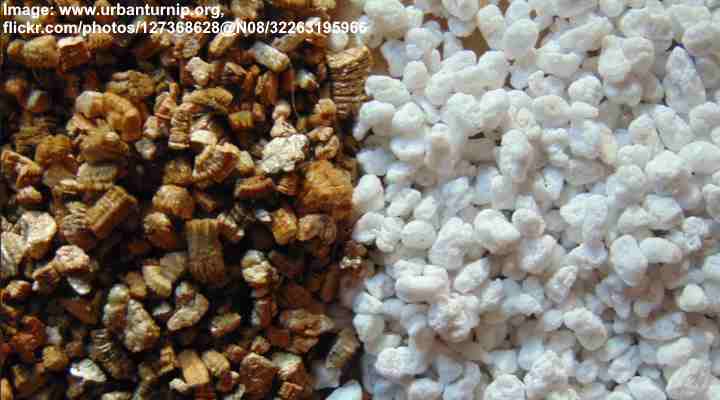What is Vermiculite: Learn How to Use Vermiculite in the Garden

Vermiculite is used in the garden or potting soil to help aerate the soil and increase water and nutrient retention. Vermiculite is an excellent choice for amending the soil of moisture loving plants because of its water retention properties. It is also useful for encouraging faster root growth in cuttings. One of the benefits of horticultural vermiculite is that it doesn’t break down in the soil.
Vermiculite is an invaluable soil amendment ingredient for any gardener or houseplant owner. Apart from being very light, vermiculite mixes well with peat, potting soil, composted materials, and fertilizers.
Even though vermiculite has many uses and many gardeners commonly utilize it, you may still wonder about this light, pebbly mineral. For example, is vermiculite safe to use in the home? Is vermiculite suitable for organic, chemical-free gardening? What are the pros and cons of using vermiculite for soil amendment?
This article is a comprehensive guide to vermiculite that answers all your questions about this natural mineral.
What is Vermiculite?

This picture shows vermiculite after processing where it becomes lightweight particles
Vermiculite is a natural mineral that expands when heated. Raw vermiculite is a type of silicate mineral that looks like shiny black or brown flakes. Horticultural vermiculite is made by heating the raw vermiculite. As a result it expands up to 30 times its original size. It also takes on an accordion shape.
After going through a hydrothermal process, the rock-like vermiculite becomes lightweight granules with a grayish-brown appearance.
Vermiculite is found in mineral mines in South Africa, China, the U.S., and Brazil. To turn this hard rock mineral into a lightweight pellet, an extreme heat process is required to make it. In the process called exfoliation, vermiculite is heated to between 1,000 and 1,500°F (540 – 810°C). The flakes puff up and expand and look like worms. The resulting particles are graded depending on their size.
What is Vermiculite Made Of?

Vermiculite before processing looks like a hard rock mineral
Vermiculite is made from a hydrated magnesium aluminum-iron silicate mineral that resembles mica. The unique mineral has a crystalline structure along with trapped water. Commercial vermiculite contains silicon oxide, magnesium oxide, aluminum oxide, and water. After making commercial vermiculite, it looks like golden-brown granules.
Commercial vermiculite granules for horticultural use have a neutral pH level. It’s ideal for gardening because vermiculite is absorbent, lightweight, and insulating. This means that vermiculite has many commercial, industrial, and residential applications.
Uses of Vermiculite
The most common use of vermiculite is as an effective, low-cost soil amendment. Vermiculite is often used in soil mixes to improve aeration, increase water retention and promote healthy root growth. Vermiculite is also used in soilless growing mediums (hydroponics). Other uses of vermiculite include rooting cuttings and improving seed germination.
Here are a few ways to use vermiculite in gardens or houseplant potting soil:
Use vermiculite for soil amendment. Vermiculite is lightweight and it combines well with peat or compost to create a lighter growing medium. Using vermiculite for soil amendment gives roots more room to grow and improves soil drainage.
Vermiculite can be used for root cuttings. Use medium- or fine-grade vermiculite to root leaf or stem cuttings when propagating houseplants. All you need to do is fill a small jar with vermiculite, water the granules, and put in the cutting.
Use vermiculite to increase water retention in soil. Vermiculite has excellent water retention properties and it releases the moisture according to the plant’s needs. When mixed in soil it can help prevent the plant from being overwatered and develop root rot.
Use vermiculite to improve seeds germination. Another way to utilize vermiculite in gardening is for seed germination. Mix vermiculite with peat or soil to improve the germination of seeds.
Aerate soil using vermiculite. One of the uses of vermiculite is to prevent compacted potting soil. The soil in indoor plant pots tends to become compacted due to roots absorbing water. This results in inadequate moisture and nutrient uptake. So, mixing the vermiculite in the soil help to prevent soil compaction.
Use vermiculite in cut flower arrangements. Use horticultural grade vermiculite for displaying cut flowers. Half fill a vase with vermiculite, drench with water, and then pour off the excess. Arrange your flowers in the vase. You’ll find that using vermiculite will help flower blooms to last longer.
Use vermiculite for storing root vegetables and bulbs. You can use vermiculite to store bulbs over the winter or keep root vegetables fresh. Just pack vermiculite around the bulbs to prevent moisture from building up and protect them from temperature fluctuations.
Vermiculite can be used for mulching. Help improve the growing conditions of garden plants by using vermiculite for mulching. Add two inches (5 cm) of vermiculite on the soil around shrubs, roses, or tomato plants to improve moisture control and protect roots from heat or cold.
How to Use Vermiculite in the Garden and Landscape
Use vermiculite in garden soil to create a light growing medium. It’s best to use vermiculite in gardens where water moisture is vital for plant growth. You can work in vermiculite to light or sandy soils to amend their water retention capabilities.
Here are some ways to use coarse grade, horticultural vermiculite for lawns, plants, shrubs, or trees in your garden:
Use vermiculite when seeding lawn. Before applying lawn seeds, mix vermiculite into the soil. The recommendation is to mix approximately 3 cubic feet of vermiculite for every 100 square feet (30 m²) of soil. After mixing the vermiculite into the garden soil, seed your lawn. Then cover the area with a ¼ inch (6 cm) of vermiculite. Irrigate the seeds thoroughly. Vermiculite benefits the new lawn growth by helping to maintain moisture in the soil, protect the seeds from heat, thus helping the lawn seeds germinate faster.
Use vermiculite in raised garden beds. Use about one-third vermiculite in your raised bed soil. Adding vermiculite in the soil amendment helps it to retain moisture. Vermiculite can also help with nutrient retention in raised beds in your garden.
Use vermiculite in your garden soil to grow vegetables and flowers. To prepare garden soil to grow plants, dig in a 2” to 3” (5 – 7.5 cm) layer of vermiculite. Using vermiculite in sandy garden soil helps it to retain moisture.
Vermiculite is used for growing trees or shrubs—Dig the hole where you want to plant your tree or shrub. Make a soil mixture by combining equal parts of soil and vermiculite.
Although vermiculite can help loosen garden soil, if your only goal is to aerate the earth, then it’s best to use perlite. But if you live in hot climates, vermiculite is superior to perlite because of its superior water retention properties.
How to Use Vermiculite in Hydroponics
To use vermiculite in hydroponics, combine equal amounts of perlite and vermiculite. This combination helps to prevent too much moisture in the root system. The addition of perlite to vermiculite also improves aeration.
Vermiculite is an excellent soilless medium for use in hydroponics. Its primary benefit is water retention. The other benefits of vermiculite in hydroponic media are that it’s lightweight. All you need to do is apply moisture to vermiculite to use it for hydroponics.
Using Vermiculite for Rooting Cuttings
Vermiculite is the ideal medium for rooting cuttings. Its moisture retaining abilities encourage root growth of stem or leaf cuttings. Vermiculite also allows air to circulate, creating the perfect environment for propagating new plants.
Always use fine-grade, horticultural vermiculite to root cuttings. To root stem or leaf cuttings in vermiculite, this is what you should do:
- Drench the vermiculite with water to moisten it thoroughly and put in a small jar or container.
- Dip the cut end of the leaf or stem cutting in rooting hormone and insert it into the vermiculite to root.
- Cover the container with a clear plastic bag and put it in a warm spot where there is bright, indirect sunlight.
- After about four weeks, roots should be visible on the cuttings.
- Transplant the rooted cutting into a container with the appropriate potting mix.
Advantages of Vermiculite
The benefits of vermiculite are that it won’t rot, break down, or become moldy. Also, it’s a highly absorbent, non-toxic substance without any odor.
The advantages of vermiculite are that it’s lightweight, helps aerate soil, and retains moisture. Vermiculite is popular among professional gardeners for its ease of use, low-cost, and benefits to soil and plants.
What are the other benefits of vermiculite? Here are five reasons to use vermiculite:
1. Vermiculite helps to aerate soil and retain moisture
Vermiculite is an excellent addition for light soil to help retain moisture. Vermiculite is also used in heavier soils to aerate them.
2. Vermiculite encourages faster root growth
Combining vermiculite with peat or composted organic matter helps roots grow faster. Vermiculite facilitates more room in soil, giving roots space to develop. So, young roots can grow easier, resulting in vigorous plant growth.
3. Vermiculite doesn’t deteriorate or break down
Vermiculite is reusable because it doesn’t deteriorate in the soil. Unlike other soil amendments such as bark chippings, vermiculite is from inorganic material and doesn’t decompose. This fact makes vermiculite a cost-effective soil amendment ingredient.
4. Vermiculite helps plants absorb nutrients
Another benefit of vermiculite is that it has cation exchange properties. This quality is vital for soil fertility because vermiculite can help release potassium, calcium, ammonium, and magnesium to growing plants.
5. Vermiculite assists with plant propagation
Using vermiculite for rooting plants for propagation is exceptionally straightforward. This rooting medium is ideal for cuttings because of its moisture-retentive properties and neutral pH levels.
Vermiculite vs. Perlite

Vermiculite (left) and perlite (right)
Vermiculite is better than perlite when it comes to water and nutrient retention properties. However, perlite is better than vermiculite for aerating soil or loosening up heavy clay soil.
Perlite is better suited for plants that don’t like consistent moisture in their potting soil such as succulents and cacti. Vermiculite is better suited for plants that like to grow in moist soil such as ferns.
It’s fine to mix perlite and vermiculite to achieve a balance of aeration and water retention. Many hydroponic systems recommend a 1:1 ratio of vermiculite and perlite to grow plants in water only.
Read our complete guide to using perlite.
Vermiculite vs. Pumice

Pumice volcanic rocks
Pumice is great for aerating dense or poor draining soil, however it only has minimal water retention properties. Vermiculite is better than pumice at retaining moisture. This makes it a better choice than pumice if you want to increase water retention in the soil.
Disadvantages of Vermiculite
There are times when vermiculite isn’t the best option for gardeners. Its ability to retain moisture doesn’t suit all plants, and it could lead to waterlogged soil if combined with heavy clay soil.
Here some of the disadvantages of vermiculite:
1. Vermiculite holds too much moisture for some plants
Because vermiculite retains moisture, it’s not ideal for many types of houseplants. Indoor plants are susceptible to root rot if they grow in damp, cold conditions. This can lead to bacterial and fungal root diseases that affect your plant’s growth.
2. Vermiculite comes from a non-renewable source
Vermiculite is a mined mineral from a non-renewable source, similar to perlite. Although there are enormous supplies of vermiculite in the world—enough to last for hundreds of years—it will eventually run out.
3. Vermiculite dust could be hazardous
Although vermiculite is not toxic, there are some concerns about breathing in fine particles of dust. When working with vermiculite, it’s always best to use a protective face mask. Also, dampen vermiculite before working with it to reduce the amount of dust you inhale.
Is Vermiculite Safe to Use?
Horticultural vermiculite is safe to use. No scientific studies show evidence that long-term or short-term exposure to vermiculite poses any health concerns. Vermiculite has not been linked with any acute or chronic toxicity or that it contains carcinogens.
The Agency for Toxic Substances and Disease Registry (ATSDR) reported on concerns over links between asbestos and vermiculite. However, the contaminated vermiculite was from a disused mine in Libby Montana, U.S.A. Since 1990, no vermiculite has been produced from the mine. All vermiculite products currently on sale meet strict standards and are safe to use.
It’s important to remember that pure vermiculite doesn’t contain any asbestos.
Is Vermiculite Toxic?
Vermiculite is not a toxic substance and safe to use in gardening. It is safe to handle vermiculite when potting plants or working in the garden. However, because the fine dust particles can irritate the respiratory system, it’s advisable to wear a protective mask.
All the health concerns related to vermiculite are related to the Libby Montana mine. There, asbestos had contaminated sources of vermiculite. However, the mine closed in 1990 and no longer produces any vermiculite.
Does Vermiculite Break Down?
Vermiculite is an inorganic substance—meaning it’s from nonliving matter. Vermiculite doesn’t deteriorate, decompose, or break down in the soil. It’s possible to reclaim coarse vermiculite granules from potting soil to reuse them. Vermiculite benefits the soil for as long as it’s in the growing medium.
Is Vermiculite Organic?
Vermiculite is a natural mineral and is excellent for organic gardening. There are no synthetic additives or chemicals used in making vermiculite. The light brown granules are made by putting mineral flakes under extreme heat. Vermiculite is on the USDA’s list of substances approved for use in organic farming.
Confusion arises when vermiculite is described as coming from an inorganic source. However, that only means that vermiculite is from a substance that doesn’t contain carbon—therefore is a non-organic substance.
Can You Grow Plants in Just Vermiculite?
Vermiculite is an ideal soilless growing medium. All you need to do is soak medium- or coarse-grade vermiculite in water to dampen it. Then you can grow plants in this soilless medium. Because there are no minerals or nutrients in vermiculite, you’ll need to add the appropriate fertilizer.
Where to Buy Vermiculite
Vermiculite is sold in garden centers, DIY stores, or places specializing in hydroponics. You can also find vermiculite for sale online in Amazon. Just make sure that you buy horticultural vermiculite.
Related articles:
